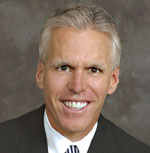The study calls the new standard "radically different" from the previous standard and says because its rules for product markings have changed, users will need to be educated on matching the hazard from which they need protection with the new marking on the product.

After top officials met today at the White House with the president, the company announced it will inject $5 billion this year and $1.25 billion quarterly thereafter until the full amount is reached.
The agency's inspections found inadequately trained employees performing work without the proper personal protective equipment while being exposed to live parts.
The July 14 meeting to be hosted by the National Personal Protective Technology Laboratory at the DoubleTree Pittsburgh Airport Hotel will cover lots of issues.

A van from the Health and Safety Executive is making a two-week safety tour of major construction sites in the South East region through June 21.
Genetics, diet, lifestyle, and a lack of health care are cited as factors contributing to the higher rate.
As Scott Health & Safety announced it has donated more than $600,000 worth of respiratory and other equipment, New York City's mayor said 12 employees with emergency response expertise are leaving June 7 for Port-au-Prince to help in building a local Community Emergency Response Team program.

You'll find the new ANSI/ISEA Z87.1- 2010, American National Standard for Occupational and Educational Personal Eye and Face Protection Devices, is easier to understand and use than the 2003 edition, but don't be fooled into thinking it was a snap to finish it.
The general consensus of those responsible for on-the-job safety is that unsafe acts cause most all on-the-job injuries. The safety field recognizes that companies with world-class safety have a certain culture in which people do not engage in the unsafe acts that result in an actual loss. Because most injuries result from human actions, the key battle in the safety war is for the minds of the workers.
Members of the Safety Equipment Distributors Association are bound for downtown Baltimore this month and the association’s 2010 Safety Leadership Forum in better spirits than a year ago. The event kicks off with a June 15 reception at 6 p.m., less than three hours after the expo of ASSE’s annual meeting has closed, which allows distributor members who exhibited there to attend the SEDA meeting economically, said Kaymie Thompson Owen, SEDA’s associate director.

Today, branded manufacturers are placing greater emphasis on product differentiation as customers become more sophisticated in their expectations. Hand protection products must meet customer requirements at every level, providing the protection, comfort, and dexterity that help promote worker safety and productivity.

The 2009 downturn didn’t stop W.W.Grainger, Inc. from hosting two “Total MROSolutions” events in Orlando for thousandsof customers in January 2010, and the companyliked what they were saying. “Wethink it’s a great time for Grainger topick up share for a lot of the reasonsthat David mentioned,” GraingerChairman, President and CEO JamesT. Ryan said after the second event’sJan. 21 keynote speaker, David Manthey,focused his remarks on consolidationamong distributors and signs ofa slow recovery.
"The employer knowingly operated high-pressure vessels even after being warned of the potential for a catastrophic failure due to material design and fabrication defects," said OSHA's Dr. David Michaels. "This simply is unacceptable, and OSHA will use the full extent of the law to ensure the company is held accountable for its actions."
The agreement, which includes 15 worksites and approximately 53 subcontractors, focuses in part on reducing exposure to hazards and incidence of serious injuries and fatalities.

Health and Human Services Secretary Kathleen Sibelius hailed the CDC report released Thursday. It focused on central line-associated bloodstream infections, which cause an estimated $2.7 billion in added health costs nationally.
The inspection was initiated under the agency's Construction Hazards Emphasis Program when an OSHA inspector observed employees working at heights of more than 14 feet without the use of fall protection.

The agency is seeking comment on, among other things, whether it should include an explicit reference to combustible dust or other hazardous material in the regulatory language of the final rule.
The agency needs nominees with experience and expertise in construction-related safety and health issues to fill two employee, two employer, one state safety and health agency, and two public representative seats to advise DOL on developing standards affecting the construction industry.
Following a thorough investigation, the agency issued two willful and 12 serious citations with total proposed penalties of $135,900. The alleged violations include arc flash hazards, insufficient hand protection, and industrial truck training deficiencies.
The site by IRSST, a Montreal research agency seeking to prevent occupational injuries and illnesses, allows searches by glove model or hazard type.